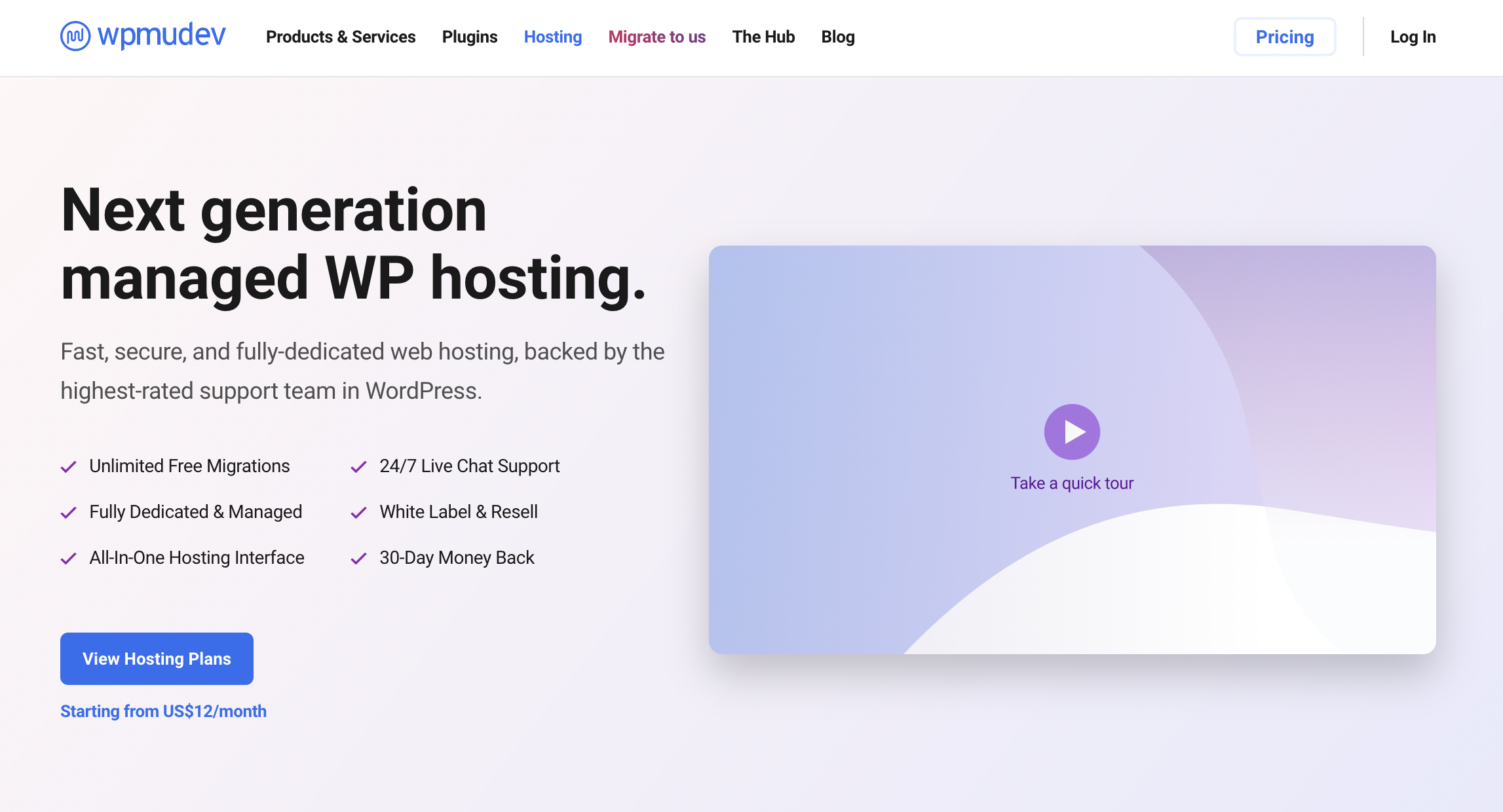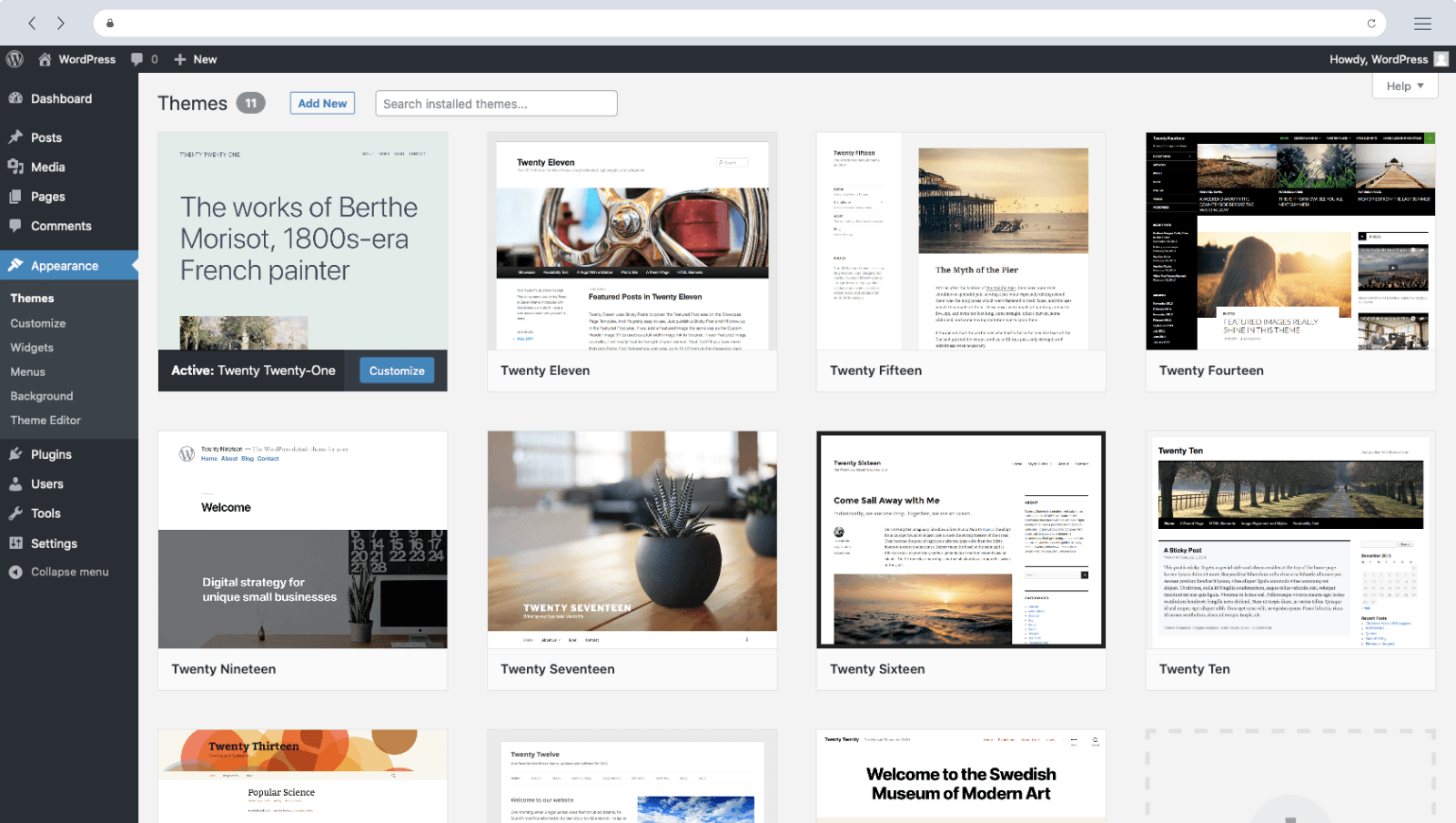We love WordPress. WordPress is a content management system (CMS) that helps you create a website or blog from scratch or improve an existing website. It’s one of the most popular CMSs today, and it’s free and open source.
WordPress is an excellent option for anyone looking to create a website or blog. It’s easy to use and has many features, themes and plugins to choose from. You can also find a WordPress theme to suit any style or purpose – from millions of free themes to countless premium themes. And because it’s so popular, there’s a large community of users and developers who can help you if you run into any problems – rarely there isn’t an answer to a technical question already out there!
Why do developers love WordPress?
WordPress is also free and open-source, making it a popular choice for developers. There are millions of WordPress users and developers worldwide, so if you run into any problems, there’s a good chance someone has already solved your problem. And if not, you can always ask for help from the community.
WordPress is highly accessible for a developer at almost any skill level since it’s relatively easy to learn and use. Even if you’re not a developer, you can still create a website or blog with WordPress. However, if you are a developer, there are endless possibilities for customising WordPress to meet your specific needs.
Basic hosting, theme setup and content editing are easy to handle even with the most basic knowledge of websites. If you want to get more advanced, though, there are plenty of possibilities – from developing custom themes and plugins to integrating with other systems, such as e-commerce, ElasticSearch, payment gateways, booking systems and more.
Why we use WordPress for our clients
We like WordPress as a website builder since it has a lot of capabilities and options. We create unique websites, yet we frequently use the same configuration for every client site we build. Why? Because we’ve mastered specific themes, plugins, and systems, which we feel offer the best setups for our clients.
WordPress is easy to use for all skill levels
There is very little we can’t do with WordPress for businesses ranging from individuals and startups to multinational corporations. All this while still providing our clients with an easy-to-use content management system (CMS) that they can update and maintain themselves – saving them time and money in the long run.
How to install WordPress

WPMU Dev offer dedicated WordPress hosting
There are a few ways to install WordPress, but the most common is to use a hosting provider that offers WordPress hosting. WordPress hosting is a special type of hosting that makes it easy to install WordPress and set it up for your website. You can also run WordPress from WordPress.com, the paid-for non-open-source version – but be mindful of the limitations such as no real developer access and the additional costs involved.
If you already have a website hosted somewhere else, you can install WordPress on your existing hosting account. However, it’s usually easier to use WordPress hosting if you don’t have an existing website. At Riselabs, we use WPMU Dev to host all our WordPress websites and operate a suite of plugins to monitor them, run backups, keep bandwidth in check and provide clients with dedicated DigitalOcean-powered cloud hosting.
Getting started
Sign up for a plan with a provider like WP Engine, SiteGround, or Flywheel to get started with WordPress hosting. Once you’ve signed up for an account and chosen a plan, you’ll be able to install WordPress with a few clicks.
How to create pages and posts in WordPress
Creating pages and posts in WordPress is simple. First, log into your WordPress site via /wp-admin (usually after the .com or .co.uk, e.g. example.com/wp-admin) and go to the Posts or Pages sidebar. Then, click on Add New to create a new page or post.
To create a new page, give your page a title and then start typing in your content. You can also add images, videos and other media content, including file downloads and password-protected content for visitors to access with permission.
Posts vs Pages
Creating a new post is similar to creating a page, but there are some key differences. Posts are usually timestamped and archived by date, while pages aren’t. Timestamping makes posts ideal for blog content, while pages are better suited for static content like your “About” page or contact information.
When you’re done creating your page or post, click on the Publish button to make it live on your website.
Editing
If you ever need to edit an existing page or post, go to the Pages or Posts sidebar, find the page or post you want to edit, and click on Edit. From there, you can make changes to your content at any time. Be mindful that changes to content “permalinks”, the URL the page lives on (for example /about/our-team), can break links to pages and disrupt SEO – we will cover this in a different blog post. For now, try to avoid changing page URLs and page names.
How to use themes in WordPress

WordPress Themes. Courtesy of https://wordpress.org
Themes are one of the most fun and most accessible things to play with within WordPress. They determine the look and feel of your website, and there are endless amounts of them to choose from. You can find free themes on the WordPress.org theme repository or buy themes from ThemeForest or other marketplaces.
Install a theme
To install a new theme, go to the Appearance > Themes sidebar and click on the Add New button.
Once you’ve found a theme you like, hover over it and click on the Install button. Once the theme is installed, you’ll likely find new options in the sidebar for controlling the theme, such as colour palettes, fonts and no doubt other branding tools for logos and your business name.
Next, you can continue editing your website with the new theme handling the look and feel. Many themes also come with content layouts and templates to help you get started with setting up pages and posts, too.
How to use plugins in WordPress
Plugins are one of the best things about WordPress. They’re essentially small applications that you can install on your WordPress site to add extra functionality. Plugins might be adding a social media share button to your articles or installing a plugin to create a contact form.
There are thousands of plugins to choose from, and most of them are completely free and offer endless additional functionality for your site or blog.
Install a plugin
To install a plugin, go to the Plugins sidebar and click on Add New.
From there, you can search for specific plugins by name or functionality. Once you’ve found the one you want to install, click on Install Now and activate it once it’s finished installing.
Be careful not to install too many plugins, which can significantly slow down your website. Only install plugins that you really need or offer significant value to your visitors.
Premium plugins
The term “premium” is used extensively throughout the plugin repository, which often relates to extended functionality or unlocking extra features for a fixed cost or – more often – a subscription.
We believe in the motto “you pay for what you get”, and premium plugins often surpass their free or alternative counterparts by offering better support, ongoing development and improvements, including regular security updates.
The exception to paid to be better than free, in our opinion, is WordPress itself and WooCommerce, a fantastic free e-commerce tool.
Plugin age and compatibility
We advise against installing a plugin with an outdated update for at least a year unless it’s a very static plugin providing basic features – and even then, no more than two years.
We often say this as bad actors look to exploit loopholes in old unpatched plugins with all popular platforms. We’ll cover this in more detail in another post on WordPress security.
If in doubt, it’s best to work with a professional WordPress developer
If you’re not sure how to use WordPress or want to add extra functionality to your website, it’s best to work with an experienced WordPress developer. They can help you install plugins, themes, and other features and ensure your website is running smoothly and securely.
We also understand optimisation, SEO, security and a whole range of best practices for setting up and running your WordPress website.
WordPress theme design
Although WordPress is remarkable for its selection of themes, you may prefer your website to not look like potentially thousands of other sites. Working with a professional WordPress developer such as Riselabs will allow you to fully customise every aspect of your theme, including building your very own custom theme.
Are you feeling brave?
If you’re feeling brave and want to follow our guide above, go for it! You can always contact us later if you need help with your WordPress website. We’re always happy to chat!





